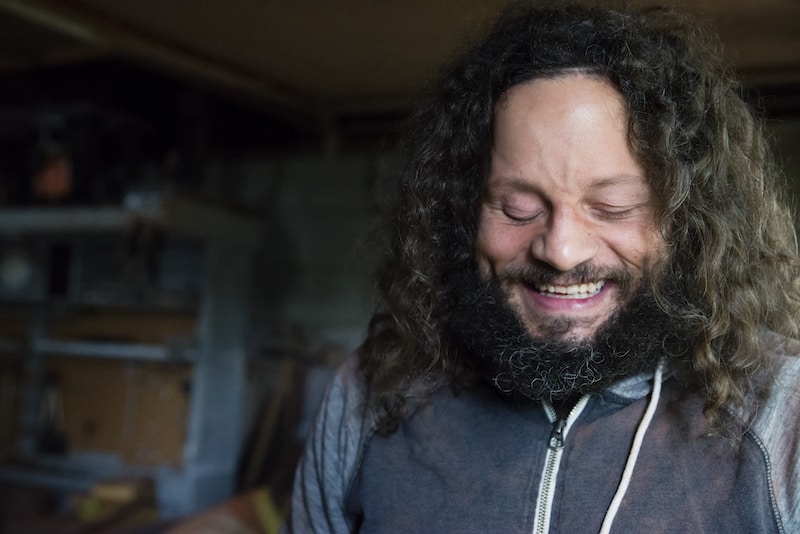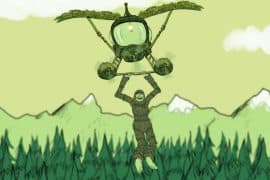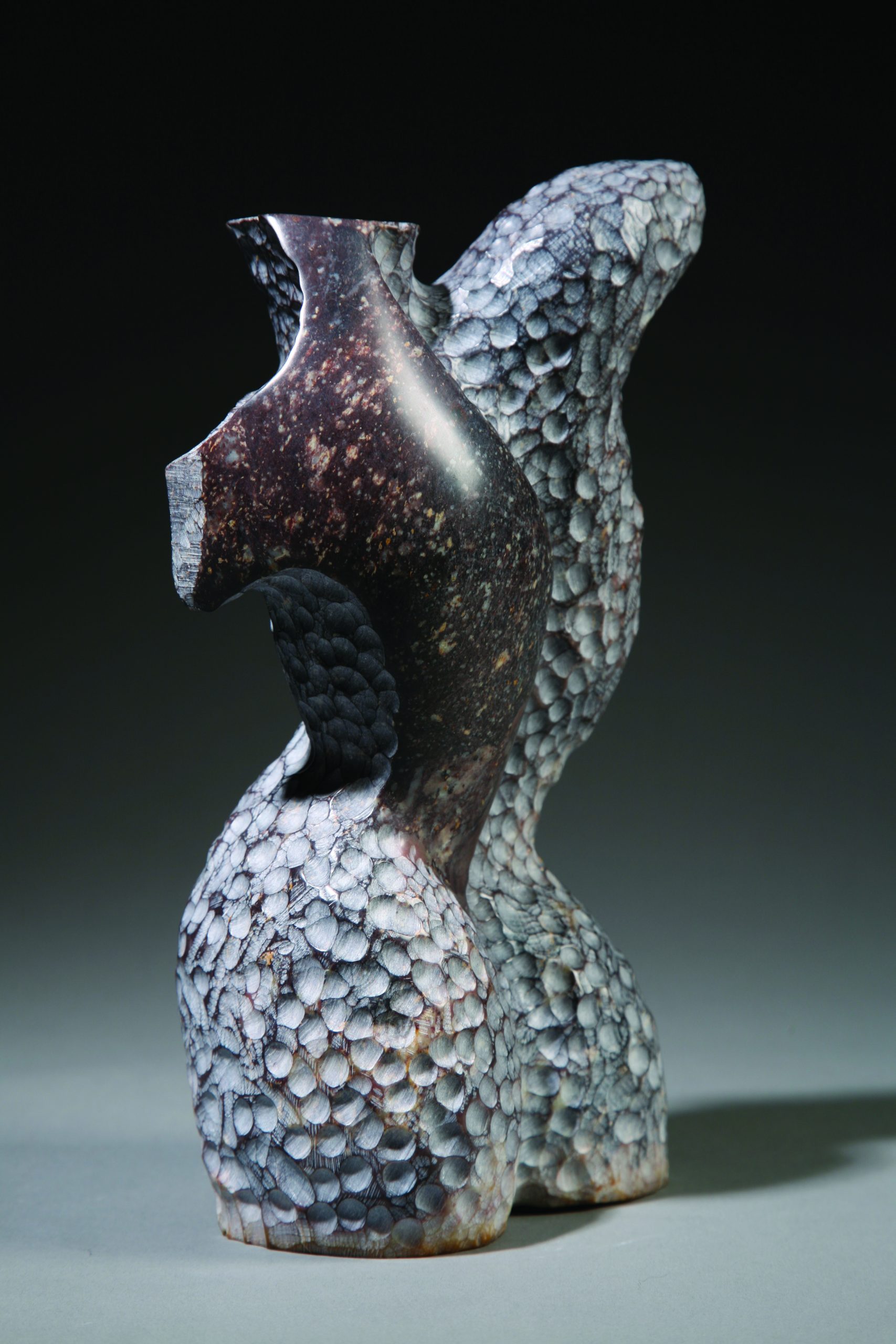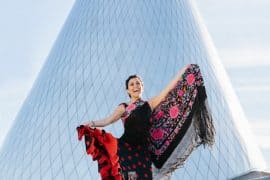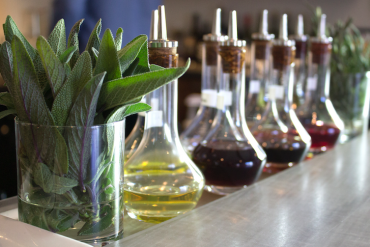Sightlessness doesn’t stop John Furniss from carving his own future
written by Viki Eierdam | photography by Ingrid McQuivey
In a dimly lit studio in Washougal, John Furniss turns exotic woods like padauk and bubinga on a lathe. Every session begins with a known endgame—a salad bowl, vase or multi-tiered jewelry stand—but the design is an unspoken conversation between Furniss and the wood. Each groove, bulge and taper is how the wood reveals its strengths and weaknesses and, for this blind woodworker, he skillfully unlocks beauty where others see flaws.
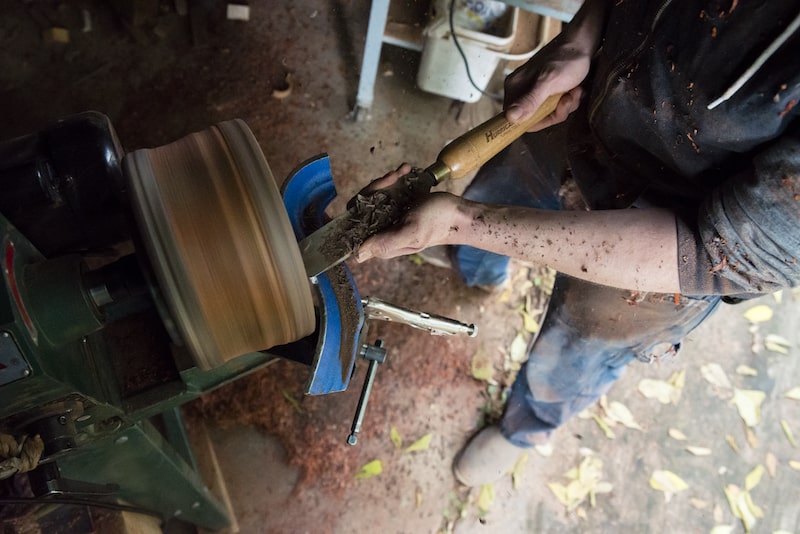
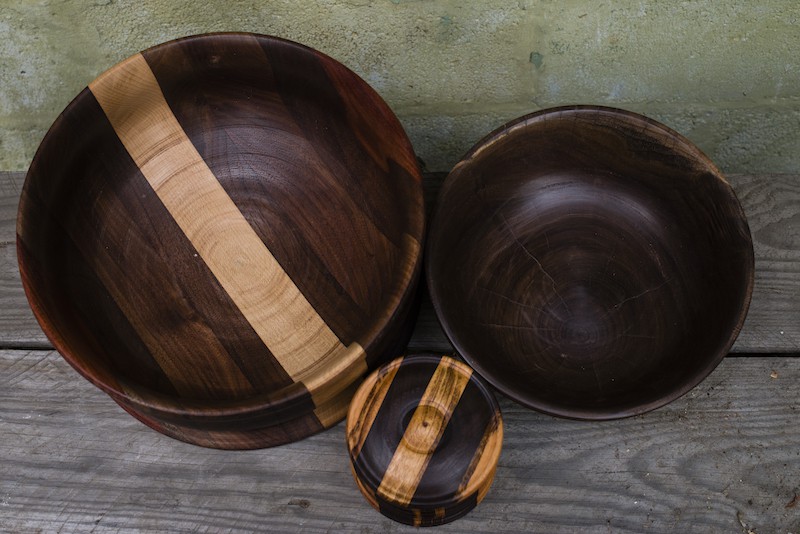

Born with sight, Furniss worked on cars, dabbled in wood framing and took school art classes from a young age. It was not until he became completely blind at the age of 16 that the world of wood opened up to him in vivid shapes and colors. “Something that happens with sighted people who have gone blind is phantom visions,” Furniss said. “I have a full color field of vision. It’s like I have a CAD (computer-aided design) program in my mind.”
At 16, when adulthood seemed far away and the challenges of youth weighed heavy, Furniss raised a gun to his left temple and shot himself. He describes his survival as “a miracle” and says the doctors who worked on him for six and a half hours were the “best surgeons you could hope for.” While total vision loss could turn some people sour, Furniss describes it as a moment that “set things right” for him. At a vocational rehabilitation school in Utah, Furniss met Chris Hathaway, a legally blind woodworking instructor. Over the next several years, Hathaway taught all he knew to an eager Furniss.
Hathaway also spent hours describing different woods to Furniss out of a comprehensive wood dictionary. That time narrowed Furniss’s interest to more exotic woods like maple, cherry, black walnut, ash, apple and bloodwood. Although Furniss is careful to work with sustainable woods, some are locally sourced, courtesy of supporters from his newly adopted county. Growing up in small towns in Wyoming, Colorado and Utah, Furniss was surrounded by family, but the communities were not large enough to support a burgeoning artist. Hathaway told Furniss about the now-defunct Emil Fries School of Piano Technology for the Blind in Vancouver and so, in 2011, he made his first trip to the Pacific Northwest.
After studying for two years, he ran a piano rebuild business with friend and colleague, Rick Patten. But the tedium of each piano requiring 1,400 separate, precise adjustments sent Furniss yearning for the meditative flow of wood. Insight from a special lady was the encouragement he needed. While attending the School of Piano Technology, Furniss met fellow artist, Anni Becker, who happened to be hand-painting a piano for a Vancouver-area event. The two struck up a friendship that turned into romance and, later, marriage.
“I was broke as a joke, and she called me and wanted to go out,” Furniss said. “I had a garden plot at the Marshall Center, and I had a giant patch of peas.” He asked her if she’d like to pick peas in his garden, and Anni described it as the most romantic first date she had ever been on, complete with moonlight. Three years later, in September 2015, they were married in that garden space.
Anni bought Furniss his first lathe and now organizes his woods by color, so he can pick from the stacks. After that, it’s all Furniss. In the shop, safety is his first priority. When he makes a cut, he checks where his hand will be and where the blade will be. He performs a test pass before any equipment is turned on. When he sets his tools, they are always unplugged until the actual cut and, although he does use a table saw, it is with no music on and always as a last resort. Furniss’s unfettered warmth and enthusiasm make him an unlikely face of suicide survival, but that is an undeniable part of his journey.
Today, he is happy to share his story with individuals if he thinks it will help them, but he prefers to be defined by the man he is now rather than the teen he once was. At 36 years old, Furniss sells canister sets, cups, plates, hors d’oeuvres trays and more at area markets and festivals. “I found I have a knack for it,” Furniss said. “I’m better at woodworking than anything else I’ve tried.”


